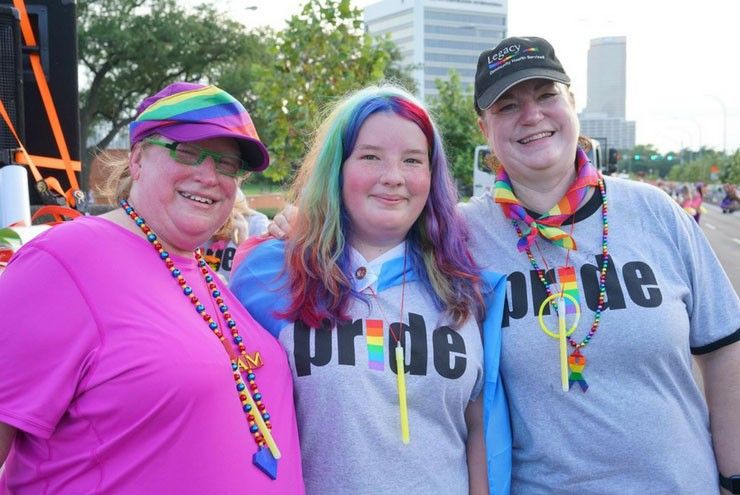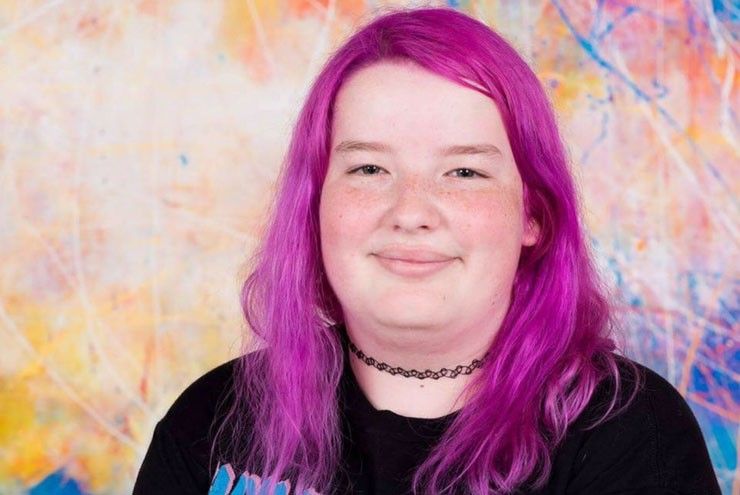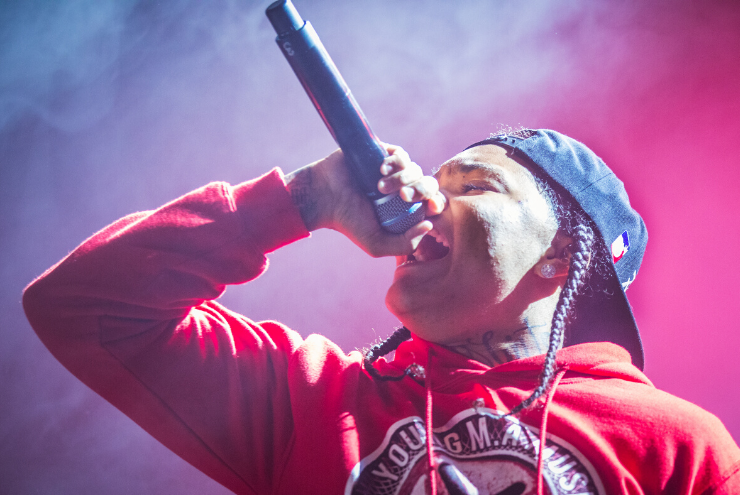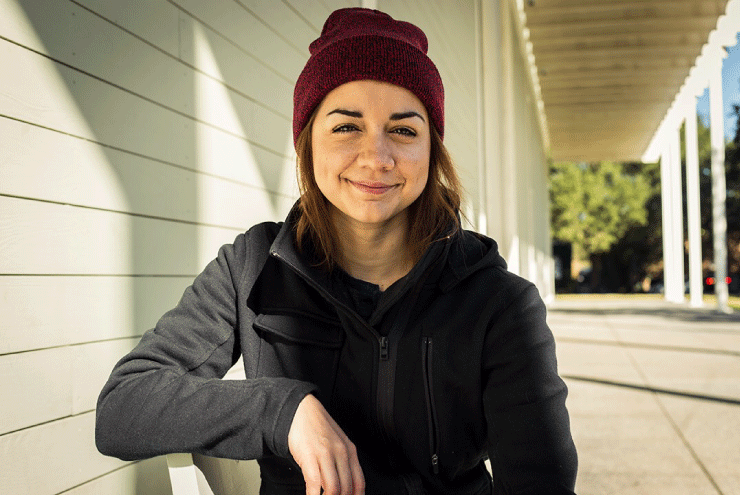Editor’s note: This is an installment of Transouthern Youth, a Spectrum South original series spotlighting transgender youth across the South.
By Megan Smith
Lily Pando tucks a strand of bright pink hair behind her ear before she speaks. I’ve just asked her if she knows where she’ll be attending college—such a mom question, I know. “I don’t know where I want to go to school yet,” she responds. “But I’m definitely on that track.”
College, regardless of where she goes, will be a huge change of scenery for Pando—the 16-year-old high school junior has attended the same small Houston Montessori school since kindergarten. Her classmates have grown with her, shared many firsts with her, and—in eighth grade when Pando came out as transgender—figuratively transitioned with her. “I know everyone in my class really well,” she laughs. “I don’t know if that made it easier or harder when I came out, but it definitely changed the effect. The good thing about knowing the same people is that I had really close friends I could talk to.”
“My coming out went in four stages: me figuring it out, me telling my friends, me telling my mom, and me telling everyone,” Pando continues. “Of course, coming out isn’t a definite thing—I come out every day.”
In reality, her journey wasn’t quite so straightforward. While Pando grew up in an LGBTQ-friendly household, she explains that she had little exposure to identities outside of the gay and lesbian realm. “I actually came out as a gay male at first, which is the opposite of what I am,” she laughs—a nod to the fact that she now identifies as female and is romantically interested in girls. “But I realized more and more that I only came out as gay because I thought that the closest I would be able to get to being a girl was being an ultra-flamboyant gay man.”
Pando grew more comfortable with self-identifying as trans and began telling friends—all of whom were supportive and understanding—before coming out to her mom. “It took everyone some time to come to terms with what was happening,” she says of her family’s reaction. “But, after awhile, my mom has come around to be the most supportive person.”
Along the way, Pando has become her own best advocate, as well as a voice for others. “When I first started realizing who I was, I had the idea in my mind that I was going to come out, do my three months of gender therapy, get my hormones, and not have anyone know I was trans. I was going to switch schools and buy wigs,” she says. “But then, when it actually came down to it, and I started living in the community, I realized just how important it is for trans people to be out, proud, and speaking out—especially trans women and trans youth.”
Pando launched into activism as early as middle school as a marketing and internal communications summer intern at Legacy Community Health. Shortly thereafter, she joined The Montrose Center’s Hatch Youth program. “That’s really when I started being outspoken,” she says. People took notice, too—Pando was recruited to be a youth member of Mayor Sylvester Turner’s LGBTQ Advisory Board in June 2016 and has advocated for Houston’s queer youth ever since. “You don’t have to speak over us or for us,” she says. “We are here and we’re ready to take action.”

Lily Pando (c) with her mom (l) and Legacy Community Health’s Katy Caldwell at the 2016 Houston LGBTQ Pride Celebration. Photo: Legacy Community Health.
For other trans youth looking to get involved, Pando offers advice: “Focus on yourself first. Don’t do anything you’re uncomfortable doing because once you’re out there, you’re out there. Make sure you’re really ready to take that step. But if you’re ready to take that step—go for it! Go to your school’s GSA. If your school doesn’t have one—start one. If you need resources for that, talk to me—I’m on Facebook. Go to your city’s local LGBTQ youth group. Talk to people on the Internet, but make sure you know who you’re talking to. Just find people who are like you, because I promise that they’re out there. You’re going to find a lot of hate, but you’re also going to find a lot of love.”
Reflecting on her journey thus far, Pando describes her transition as a series of mini rebirths—her first time going dress shopping, wearing a bra for the first time, taking her first hormones. This brings us back to the hot pink hair that falls just below her shoulders. “I dyed my hair because I felt like it was a way to shed how I looked before I started transitioning,” she explains. “Even though I already had long hair, I felt like this was a new thing that I hadn’t done before—it was a small form of rebirth. And, of course, I chose pink, because ‘It’s a girl!’”







